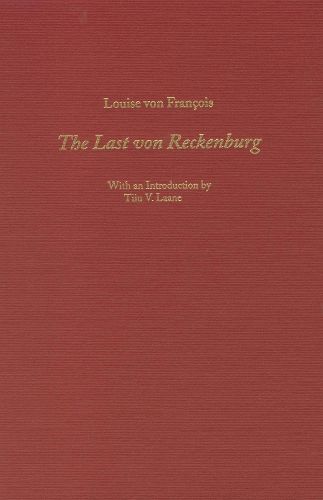Readings Newsletter
Become a Readings Member to make your shopping experience even easier.
Sign in or sign up for free!
You’re not far away from qualifying for FREE standard shipping within Australia
You’ve qualified for FREE standard shipping within Australia
The cart is loading…






In Die letzte Reckenburgerin (1871), Louise von Francois, one of the major female German-language writers of the nineteenth century, describes the fate of two women, the aristocrat Eberhardine von Reckenburg and the middle-class Dorothee Muller, set against the events of the French Revolution. This complex work is both an absorbing picture of the period, and a subtle psychological study with a strong feminist slant: Francois depicts Dorothee as a victim of a patriarchal society that robs her of any chance of self-development. The book thus has considerable significance in the light of recent feminist literary criticism. Professor Laane’s detailed introduction gives an account of the the critical reception of the book in the United States - it was translated into English in 1887 by Mary Joanna Safford (under the pseudonym J.M. Percival) after achieving great popularity in Germany - and suggests ways of understanding this long neglected novel.
$9.00 standard shipping within Australia
FREE standard shipping within Australia for orders over $100.00
Express & International shipping calculated at checkout
In Die letzte Reckenburgerin (1871), Louise von Francois, one of the major female German-language writers of the nineteenth century, describes the fate of two women, the aristocrat Eberhardine von Reckenburg and the middle-class Dorothee Muller, set against the events of the French Revolution. This complex work is both an absorbing picture of the period, and a subtle psychological study with a strong feminist slant: Francois depicts Dorothee as a victim of a patriarchal society that robs her of any chance of self-development. The book thus has considerable significance in the light of recent feminist literary criticism. Professor Laane’s detailed introduction gives an account of the the critical reception of the book in the United States - it was translated into English in 1887 by Mary Joanna Safford (under the pseudonym J.M. Percival) after achieving great popularity in Germany - and suggests ways of understanding this long neglected novel.